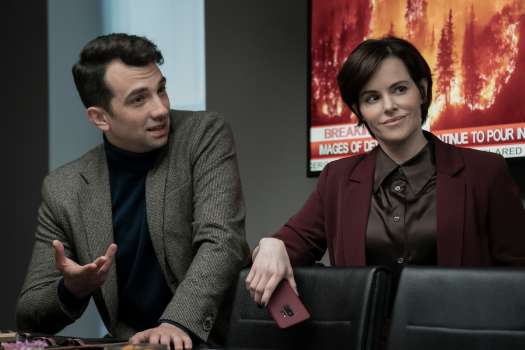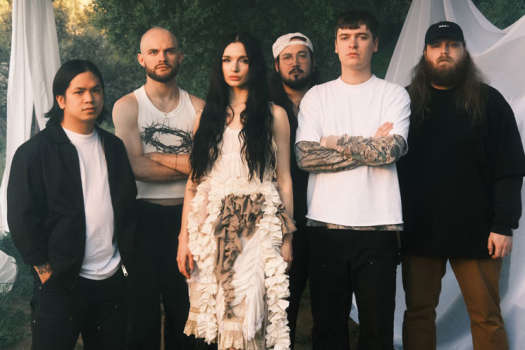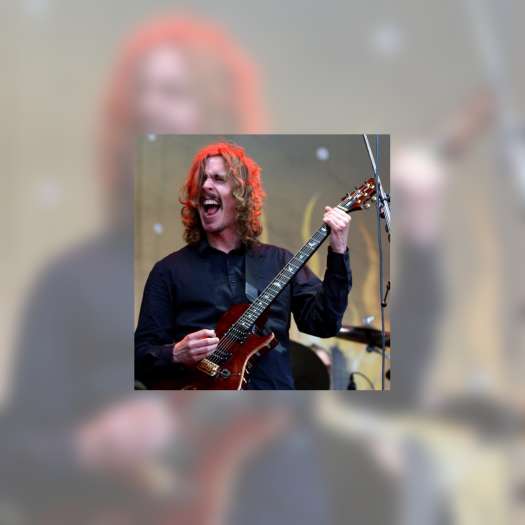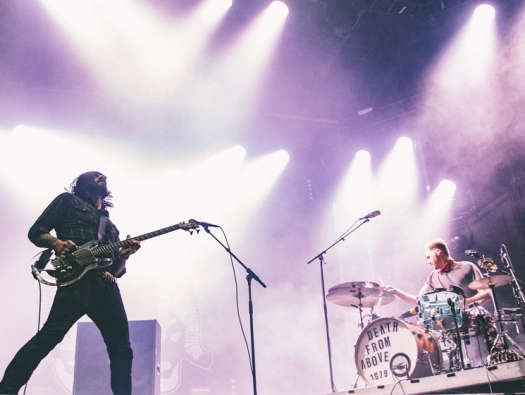"I've never really worked in Toronto before."
Hearing Daniel Lanois say this comes as a shock, since it stands to reason that arguably Canada's greatest record producer of the past three decades would have some experience within the Toronto scene. Although his early commercial breakthroughs were with Toronto bands such as Martha & the Muffins and the Parachute Club, those records were made at Grant Avenue Studio, the Hamilton house that Lanois and his brother Bob reconstructed in the mid-'70s after outgrowing their first recording studio in their mother's basement in nearby Ancaster, ON.
But almost as soon as Brian Eno helped put Lanois on the international stage by asking him to co-produce U2's The Unforgettable Fire in 1984, Daniel's distinctive approach to ambient recording found him working wherever the atmosphere seemed most conducive, whether it was New Orleans, Berlin, or the southern California desert. His recent move to Toronto has been prompted in part by this year's Nuit Blanche, the city's annual outdoor art extravaganza, which gave Lanois the opportunity to transform Nathan Phillips Square into what he intended to be an "enchanted forest" of sound and visuals. These included samples of his other most recent credits: Neil Young's Le Noise, and Lanois's own band Black Dub, featuring vocalist Trixie Whitley, daughter of the late singer/guitarist Chris Whitley.
The mere fact that Lanois has been able to follow through with such an ambitious schedule right now is remarkable ― it has only been a few months since he was severely injured in a motorcycle accident in Los Angeles. But there were no lingering signs of trauma apparent in the 59-year-old as he bounced around his new space in Toronto's downtown west end in preparation for Nuit Blanche. He was not inclined to talk about his brush with death either; his sights, as always, were firmly set on the here and now.
"This is first thing we've done here," the customarily black-clad Lanois says, in reference to a former Buddhist temple now divided into several rooms specifically laid out for recording, listening and performing. Scattered around were the expected array of vintage instruments, such as Lanois's Sho-Bud pedal steel guitar, an ancient looking dulcimer, and his prized 1953 gold top Gibson Les Paul. Since Lanois embraced his studio-on-the-move philosophy in the mid-'80s, he and his crew ― anchored by longtime engineer and fellow Hamiltonian Mark Howard ― have set up and torn down so much of this gear in so many places, it's easy to start thinking of Lanois almost like the ringmaster of a travelling circus.
"In some ways it does feel like starting over each time we move into a new space," Lanois says. "When we came here, there was nothing but sawdust everywhere. But it had so many of the qualities I think are essential to the work I like to do, things that came directly from the fact that it was previously a place of worship."
Indeed, one of the most striking parts of the building is a meditation corner under a skylight that Lanois has set up as a listening area. On this day it has seven speakers on stands set up around its perimeter, a testing ground for Lanois's Nuit Blanche project, entitled Later That Night at the Drive-In, which could be the first step in revolutionizing how sound is projected to large audiences in open air venues.
"The idea is to bring the sound to the people, not the other way around," he says. "At most concerts, if you're beyond the first 30 rows, you're not getting the full impact of what's coming off the stage. For this, we want people to hear the same thing no matter where they are in the square, and hopefully no matter where they are in the neighbourhood."
Providing the hardware is Meyer Sound of Berkeley, California, a leading force in speaker design and construction since the 1970s when director Francis Ford Coppola entrusted the fledgling company to build a special sound system for initial 70 mm print screenings of Apocalypse Now. For Nuit Blanche, 100 Meyer speakers were deployed on 24 towers ― or "sound pods" ― around the square, with Lanois, Howard and visual co-ordinator Adam Vollick conducting the various sequences. One of the most affecting was Belgian director Nicolas Provost's contribution, Gravity, a strobe-like mash-up of classic Hollywood kissing scenes from the '50s and '60s, to which Lanois provided a new soundtrack.
As Lanois fans know, he is no stranger to the world of cinema, having composed the soundtrack to Oscar winner Sling Blade among other film work, while the word "cinematic" is often thrown around when describing his overall production approach. It therefore doesn't come as a surprise to hear Lanois say that bringing those two art forms together, as he did for Nuit Blanche, is where he sees his career path ultimately heading.
"I've always wanted to put on a festival that would combine music and film," he says. "To do something like we're doing for Nuit Blanche that would last over several days would be a great thing that I don't think anyone has ever attempted before, at least not in this way."
The new Black Dub album featuring Daniel Lanois is available now on iTunes here.
Hearing Daniel Lanois say this comes as a shock, since it stands to reason that arguably Canada's greatest record producer of the past three decades would have some experience within the Toronto scene. Although his early commercial breakthroughs were with Toronto bands such as Martha & the Muffins and the Parachute Club, those records were made at Grant Avenue Studio, the Hamilton house that Lanois and his brother Bob reconstructed in the mid-'70s after outgrowing their first recording studio in their mother's basement in nearby Ancaster, ON.
But almost as soon as Brian Eno helped put Lanois on the international stage by asking him to co-produce U2's The Unforgettable Fire in 1984, Daniel's distinctive approach to ambient recording found him working wherever the atmosphere seemed most conducive, whether it was New Orleans, Berlin, or the southern California desert. His recent move to Toronto has been prompted in part by this year's Nuit Blanche, the city's annual outdoor art extravaganza, which gave Lanois the opportunity to transform Nathan Phillips Square into what he intended to be an "enchanted forest" of sound and visuals. These included samples of his other most recent credits: Neil Young's Le Noise, and Lanois's own band Black Dub, featuring vocalist Trixie Whitley, daughter of the late singer/guitarist Chris Whitley.
The mere fact that Lanois has been able to follow through with such an ambitious schedule right now is remarkable ― it has only been a few months since he was severely injured in a motorcycle accident in Los Angeles. But there were no lingering signs of trauma apparent in the 59-year-old as he bounced around his new space in Toronto's downtown west end in preparation for Nuit Blanche. He was not inclined to talk about his brush with death either; his sights, as always, were firmly set on the here and now.
"This is first thing we've done here," the customarily black-clad Lanois says, in reference to a former Buddhist temple now divided into several rooms specifically laid out for recording, listening and performing. Scattered around were the expected array of vintage instruments, such as Lanois's Sho-Bud pedal steel guitar, an ancient looking dulcimer, and his prized 1953 gold top Gibson Les Paul. Since Lanois embraced his studio-on-the-move philosophy in the mid-'80s, he and his crew ― anchored by longtime engineer and fellow Hamiltonian Mark Howard ― have set up and torn down so much of this gear in so many places, it's easy to start thinking of Lanois almost like the ringmaster of a travelling circus.
"In some ways it does feel like starting over each time we move into a new space," Lanois says. "When we came here, there was nothing but sawdust everywhere. But it had so many of the qualities I think are essential to the work I like to do, things that came directly from the fact that it was previously a place of worship."
Indeed, one of the most striking parts of the building is a meditation corner under a skylight that Lanois has set up as a listening area. On this day it has seven speakers on stands set up around its perimeter, a testing ground for Lanois's Nuit Blanche project, entitled Later That Night at the Drive-In, which could be the first step in revolutionizing how sound is projected to large audiences in open air venues.
"The idea is to bring the sound to the people, not the other way around," he says. "At most concerts, if you're beyond the first 30 rows, you're not getting the full impact of what's coming off the stage. For this, we want people to hear the same thing no matter where they are in the square, and hopefully no matter where they are in the neighbourhood."
Providing the hardware is Meyer Sound of Berkeley, California, a leading force in speaker design and construction since the 1970s when director Francis Ford Coppola entrusted the fledgling company to build a special sound system for initial 70 mm print screenings of Apocalypse Now. For Nuit Blanche, 100 Meyer speakers were deployed on 24 towers ― or "sound pods" ― around the square, with Lanois, Howard and visual co-ordinator Adam Vollick conducting the various sequences. One of the most affecting was Belgian director Nicolas Provost's contribution, Gravity, a strobe-like mash-up of classic Hollywood kissing scenes from the '50s and '60s, to which Lanois provided a new soundtrack.
As Lanois fans know, he is no stranger to the world of cinema, having composed the soundtrack to Oscar winner Sling Blade among other film work, while the word "cinematic" is often thrown around when describing his overall production approach. It therefore doesn't come as a surprise to hear Lanois say that bringing those two art forms together, as he did for Nuit Blanche, is where he sees his career path ultimately heading.
"I've always wanted to put on a festival that would combine music and film," he says. "To do something like we're doing for Nuit Blanche that would last over several days would be a great thing that I don't think anyone has ever attempted before, at least not in this way."
The new Black Dub album featuring Daniel Lanois is available now on iTunes here.




